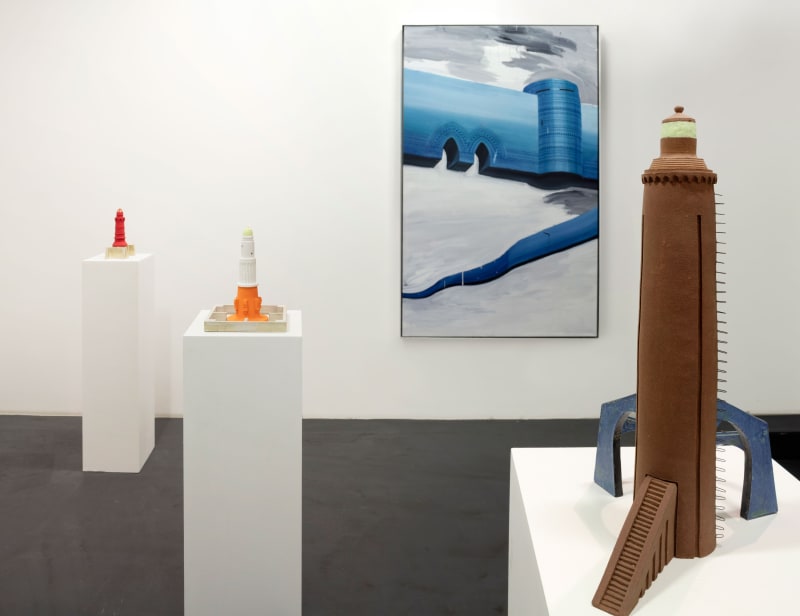Galerie Nathalie Obadia is pleased to present 249 kilometers by 68 meters, an exhibition of recent works by Shahpour Pouyan. One of the most celebrated Iranian artists of his generation, Shahpour Pouyan fashions an oeuvre that unpacks historical sites, offering a critical perspective learned in Persian culture and the contemporary political climate.
The exhibition homes in on the ways in which the artist envisions architecture as a beacon of power, that wields both positive and nefarious influences, surveying three seminal bodies of work.
Architecture has long represented a true aesthetic shock for Shahpour Pouyan who recalls it was the catalyst Iranian artists funneled their creativity into, at a time when art making was tightly controlled and sculpture making was forbidden by Islamic theology. Inspired by the ways in which Iranian culture found its artistic expression through architecture, Pouyan has dedicated much of his practice to developing a vocabulary of forms created through a conflation of Western and Iranian constructions.
As such, the Flying walls display attributes drawing from different architectural vernaculars, combining both Roman arches, watchtowers, and gargoyles as well as Persian ornaments. Referencing the 1437 painting by Sassetta part of the St Francis Altarpiece, Pouyan upends the motif of the castle in the sky from St. Francis of Assisi's dream of a celestial city. Hence the title of the exhibition further intertwines the works within Biblical scripture, alluding to the length and height of wall fencing the celestial heavens.
Inversely, these walls drawn up in the sky in his paintings evoke societal discords for the artist, alluding to the fortifications various civilizations have erected to divide people. Referencing styles from the gothic period to Roman and Persian epochs, the artist speaks to the universality and timelessness of exclusion of the "other". Rethinking the sky and its symbolism as a place of divide, Pouyan tackles the cloudy atmosphere with deft swathes of grey paint, contrasting with the detailed ornaments of the walls.
Bridging Eastern and Western traditions through aesthetic considerations, Pouyan further weaves the two together in the very technique he employs. The artist effectively starts painting with freestanding brushstrokes, applying paint on vertical canvases, much in the way of Western painting before removing them from the stretcher and laying them on his table to add details and decoration, following in the footsteps of traditional Persian painters (Miniaturists).
The Flying walls are thus shown in dialogue with reproductions of Miniature Paintings of the Great Wall of Gorgan depicted in 18 century manuscripts. Said to be only second to the great wall of China, the so-called iron rampart is put in perspective as the artist alters the original miniatures to strip them of their characters, originally shown building the wall, to further criticize its edification, portraying it as a metaphor for dissent.
The exhibition is complete with a touch of optimism as the sculptures of the lighthouses guide us to a more hopeful future. Easing passage and clearing navigation routes for ships at sea so do these lighthouses become allegories for guidance and knowledge. Fusing elements of futuristic buildings, these intriguing structures rendered in bright colors testify to the artist's proclivity towards the creation of complex constructions, amalgamations of existing architecture and an imaginary nourished by historical sites.

